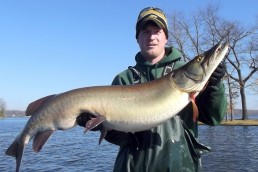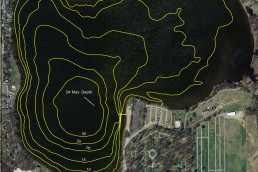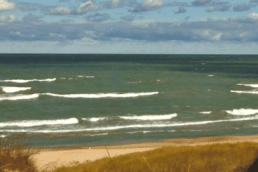Indiana News
SHARE THIS POST
Construction affects four state parks
Four big construction projects will affect guests traveling to Brown County State Park, Clifty Falls State Park, Hardy Lake and Brookville Lake for part or all of the summer season.
The most current information about alternative routes can be obtained at stateparks.IN.gov/7881.htm or by calling the respective property office, as listed below, before traveling. The projects include:
-
Brookville Lake
Fairfield Causeway Road will be closed from April through October, for major reconstruction. Access to Mounds State Recreation Area is still from State Road 101. Quakertown SRA can be accessed from S.R. 101 on Dunlapsville Road. At least one pier of the Fairfield Causeway Bridge is expected to remain open to boat traffic during the project. Call 765-647-2657 before visiting.
-
Brown County
The north entrance into Brown County State Park, two miles east of Nashville, on State Road 46, will be closed from April 8 until May 9 while repairs are made to the park’s historic Ramp Creek Covered Bridge. During the time the bridge is under repair, park visitors must use the park’s west entrance—two miles south of Nashville on S.R. 46. Horse campers may continue to use the south entrance into the equestrian campground. Call 812-988-6406 before visiting. NOTE: The bridge is the only surviving “double barreled” covered bridge in Indiana, and one of only six in the nation. It is also the oldest surviving covered bridge in Indiana. Originally built in Putnam County in 1838, it was moved to its present location—spanning the north fork of Salt Creek—by the Indiana State Highway Commission in 1932.
-
Clifty Falls
Beginning in early April, State Road 256 from Austin to Hardy Lake Road will be closed for a road-widening project. It is the primary access to Clifty Falls off I-65 for guests traveling from the north. The project will continue through the summer. From I-65, guests should take the Scottsburg exit (S.R.56), and head east toward Madison, then take S.R. 56 east all the way into Madison to access the park. An alternative route is to take S.R. 56 to S.R. 203 north to reach S.R. 256 and then head east to Clifty Falls State Park. Call 812-273-8885 before visiting.
-
Hardy Lake
Beginning in early April, State Road 256 from Austin to Hardy Lake Road will be closed for a road-widening project. It is the primary access to Hardy Lake off I-65 for guests traveling from the north. The project will continue through the summer. From I-65, guests should take the Scottsburg exit, and head east toward Madison, then head north on S.R. 203, crossing over S.R.256, and continue north on Hardy Lake Road to the property. Call 812-794-3800 before visiting.
Boxwood blight found
The DNR Division of Entomology & Plant Pathology has discovered boxwood plants in the landscape of central Indiana infected with the boxwood blight fungus. The infected plants had been purchased several years earlier from a local retail chain store.
Boxwood blight (Calonectria pseudonaviculata) is a fungal disease infesting members of the popular Buxaceae family, and is often transported through the nursery trade. Hosts include Buxus (boxwood), Pachysandra (Japanese spurge) and Sarcococca (sweetbox). Annual inspections of nursery stock by the DNR verify the pathogen is not indigenous to Indiana, nor can it be found in nursery stock sourced locally.
When the fungus—which can lay dormant in drier conditions—is present, it can be found on all above-ground portions of the plant and presents itself as dark leaf spots. It causes rapid defoliation, which typically starts on the bottom of the plant and moves toward the top. The fungal pathogen can move through sporulation in water and from dropped leaves. As a result, infection can spread to surrounding plants from a single infected plant.
The DNR is currently surveying for boxwood blight in Indiana. To date, the DNR has not found the pathogen, except for a few interceptions at retail chain stores sourcing materials from out of state.
For more information…
If you suspect one of your plants shows signs and symptoms of boxwood blight, please call (866) NO EXOTIC (866-663-9684) use the information at dnr.IN.gov/entomolo. For more information on this pathogen, see the following link: extension.purdue.edu/extmedia/BP/BP-203-W.pdf
If you see symptoms of the plant pathogen…
Call the DNR at (866) NO EXOTIC (866-663-9684) with the location. Members of the public may report boxwood blight or any other invasive species to the DNR through the Report IN website eddmaps.org/indiana/ or by downloading the Great Lakes Early Detection Network (GLEDN) app on a smartphone.
Avoid planting invasive pear trees
Ornamental pear trees, most commonly known as Bradford pears, have been a popular landscaping tree in Indiana for decades. So popular, they are crowding out native Indiana trees.
Therefore, the Indiana Department of Natural Resources encourages homeowners and landscapers to avoid planting such trees and to replace them when possible.
Are you enjoying this post?
You can be among the first to get the latest info on where to go, what to use and how to use it!
“Over time, different varieties of pear have cross pollinated in our urban areas. This allows them to rapidly spread into our natural resources,” said Megan Abraham, director of the DNR Division of Entomology and Plant Pathology.
Cultivated forms of the invasive species are most accurately known as Pyrus calleryana or the Callery pear tree. Commonly available ornamental pear cultivars—all of which are invasive and should be avoided—include Bradford, New Bradford®, Cleveland select, autumn blaze, Aristocrat®, capitol, Chanticleer®, and dozens more.
In addition to being invasive, the cultivars—which are known for their striking white flowers—typically don’t last long. They are structurally weaker and more easily damaged by storms than native trees.
Carrie Tauscher, urban forestry coordinator with the DNR Division of Forestry, says evidence of the trees’ rapid spread is easy to see. “Just take a look for glossy leaved, egg-shaped trees in highway interchanges,” Tauscher said. “It’s common to find them in unmown areas under utility lines and in lots and fields initially cleared for construction that are then left fallow.”
Stopping the spread of invasive plants means selecting alternate trees for yards and forested property. The best tree to replace any invasive tree species is a tree native to a particular region.
If you are looking for an alternative flowering tree for Indiana, serviceberry trees—which have similar white blooms in the spring and fruits attracting wildlife—are one option. Eastern redbuds, which grow quickly with eye-catching lavender flowers in the spring, are another option.
To learn more about native trees great for landscaping, visit the Indiana Native Plant and Wildflower Society page at inpaws.org/landscaping.
For more information on all invasive species adversely affecting Indiana and ways to help stop their spread, see dnr.IN.gov//3123.htm.
DNR stocks Morsches Park
The Department of Natural Resources stocked 200 rainbow trout in the north pond at Morsches Park in Columbia City on Friday, April 26.
It is the sixth year the DNR has stocked the pond. However, the educational event traditionally happening the day after the stocking has been canceled because the need has declined.
“We still want families to come out and have a good time, so we are continuing to stock the trout,” Delauder said.
The DNR is placing small, orange-colored plastic tags on 100 of the stocked trout to help count the overall number caught. Small canisters will be posted onsite for anglers to remove the tag and return them. The limit will be five trout per individual angler.
The pond has open access for shore fishing, as well as a fishing pier. A restroom facility will be open and ample parking space is available.
For more information on trout stocking, contact the district fisheries office in Columbia City at 260-244-6805.
MWO
SHARE THIS POST
Did you enjoy this post?
You can be among the first to get the latest info on where to go, what to use and how to use it!
Jack Spaulding
Jack Spaulding is an outdoor columnist living in his hometown of Moscow, Ind. with his wife, Chris. From childhood, the smallmouth bass-infested Big Flat Rock River and the surrounding hardwood forest has been his playground. He has written Spaulding Outdoors for MidWest Outdoors since 1986. Email to jackspaulding@hughes.net.



